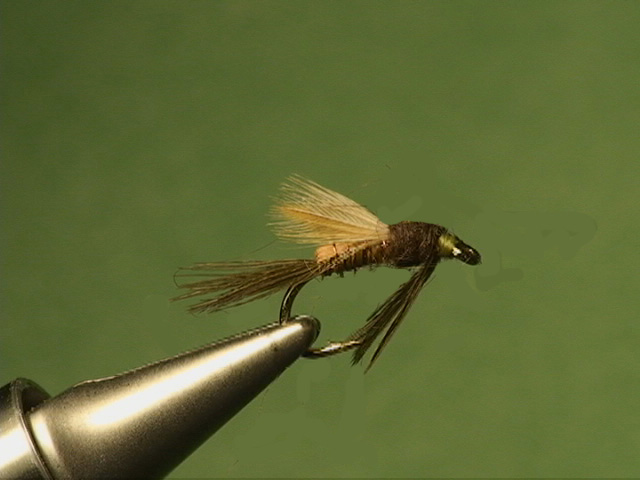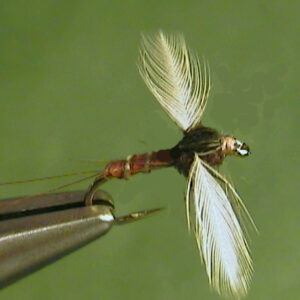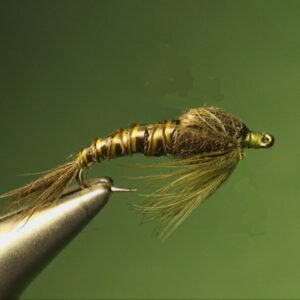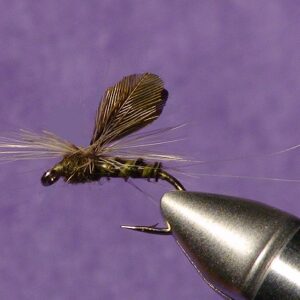Hook Size:12/14
The Quill Gordon mayfly emerger is a trout fly that imitates the nymph changing to a dun. It looks a little more like the nymph than the dun. It imitates the nymph accenting from the bottom to the surface of the water. The CDC wing should float flush with the surface skim.
Remember that the nymph changes to a dun on or near the bottom of the stream and
rises to the surface of the water with open wings that are sloped back near the abdomen
of the dun. They don’t stand upright until they have dried but this only takes a very short
time. During the hatch, a wet fly (our emerging adult) imitation of the dun rising to the
surface of the water to dry its wings, works great.
Emerger Presentation:
This process is fairly simple to imitate. Remember that the duns are not hatching in the
fast water. They are hatching in the slower water which is usually pockets behind larger
rocks and boulders – not the slower water such as found in pools. The water in the
pockets is carried away by two current seams, one on each side of the obstruction or
boulder. When the duns are rising to the surface of the water, they are caught in one of
these current seams and carried downstream.
You want to try to do the same thing with your wet fly imitation. Cast it in the pocket inside
of one of the two current seam formed where the slower water of the pocket meets the
fast water coming around the boulder. Allow the current to take the fly downstream. One
way to do this, is to approach the boulders or other obstruction in the water moving
upstream, making short cast placing the fly into the inside edges of the pockets in the
current seams. You would do this the same way you would fish a dry fly.
Another way, and the best way, is to make a short up and across presentation in the
pocket and allow the fly to drift downstream in the current seam. This usually requires
that you mend you line to get the fly down and to keep a drag free drift. Stay as close to
the pocket as possible and try to keep as much of your line off of the water as you can.
This helps to keep a drag free drift.
Remember, a fly should drift drag free where ever you present it – on the surface or
under the water. Don’t be guilty of thinking that just because you are fishing a wet fly, that
it can be brought through the water differently than the dun would drift downstream and
rise to the surface. When the fly gets downstream from your position, stop the rod and
allow the fly to rise to the surface in the current seam. When it reaches the surface,
recast it a little upstream of your previous cast and repeat the same thing.
This is a lot like the normal way you would fish a nymph (high stickin). You just allow the
wet fly to rise to the surface before casting again. You can detect the strike by watching
the end of your fly line and leader. If it jumps, stops or makes an unusual movement, set
the hook. If they hit it when you have stopped the drift and are allowing the fly to rise to
the surface, you want have any problem detecting the strike. It will jar your rod.
Copyright 2013 James Marsh



